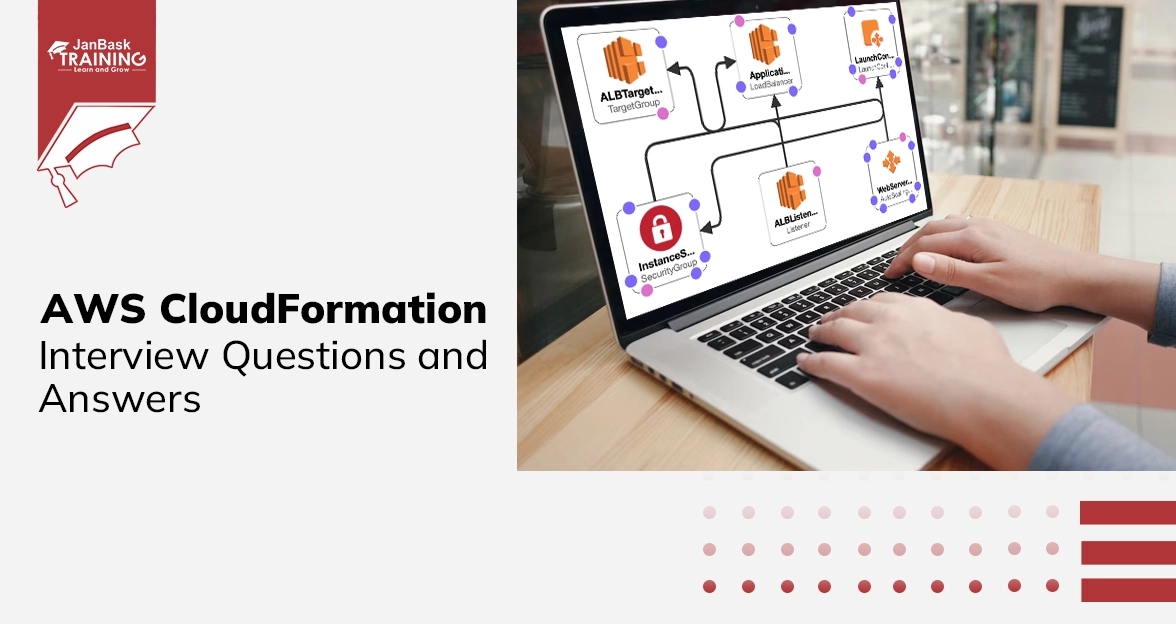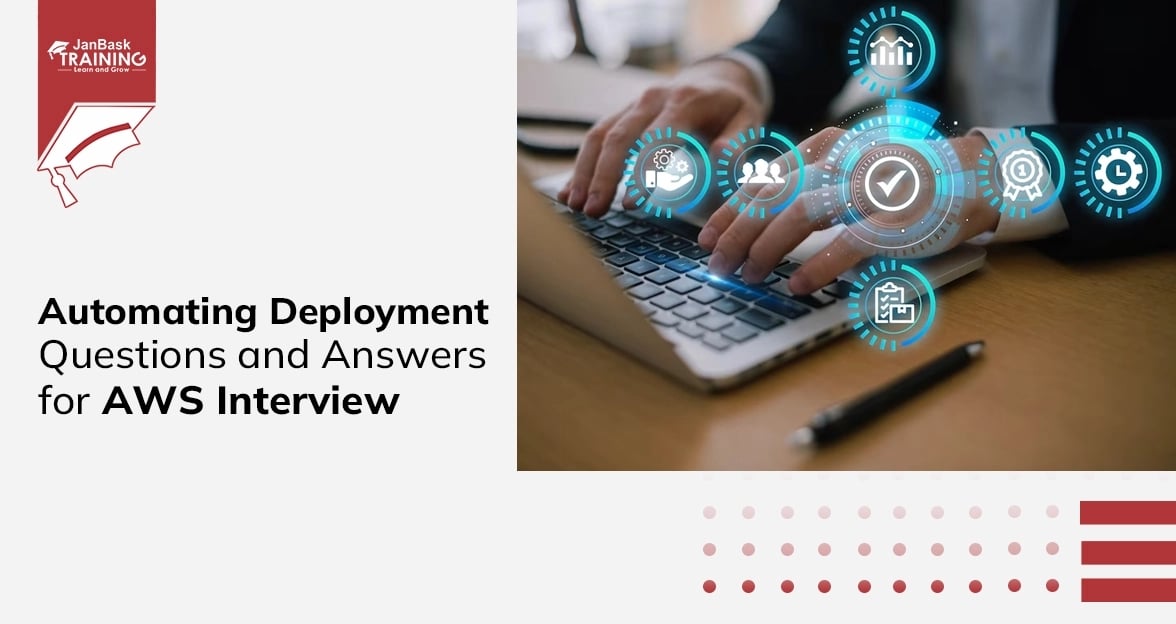 Grab Deal : Flat 30% off on live classes + 2 free self-paced courses - SCHEDULE CALL
Grab Deal : Flat 30% off on live classes + 2 free self-paced courses - SCHEDULE CALL

 Grab Deal : Flat 30% off on live classes + 2 free self-paced courses - SCHEDULE CALL
Grab Deal : Flat 30% off on live classes + 2 free self-paced courses - SCHEDULE CALL

AWS Key Management Service (KMS) is an essential tool that helps keep data safe, much like a secure lockbox for sensitive information. As a Beginner, you can benefit from understanding KMS by learning about data security, an essential aspect of AWS. In interviews, knowing about KMS demonstrates awareness of best practices and a commitment to protecting data.
Today's AWS key management service interview questions and answers will help you develop practical skills, as many AWS jobs involve handling sensitive information.
A: If a key rotation problem occurs, AWS KMS will still let you use the new key to access your data. However, you won't be able to use the old key anymore.
A: It's easy! Pick the encryption key and the data you want to encrypt. AWS KMS will do the rest, encrypting your data with the chosen key and giving you back the encrypted data.
A: AWS Key Management Service (AWS KMS) is a managed AWS service that makes it easy to create and manage encryption keys to encrypt your data across a wide range of AWS services and your applications.
As a secure, resilient service, AWS KMS uses FIPS 140-2 validated cryptographic modules, a hardware security module (HSM), to protect your master keys. The Federal Information Processing Standards (FIPS) are responsible for defining security requirements for cryptographic modules.
A: When developing your applications, you can take advantage of a number of AWS KMS features and benefits. You can use AWS KMS to make the applications and data more secure while enabling you to innovate quickly through an API.
AWS KMS offers the following features:
Centralized key management
Integration with other AWS services
Audit capabilities and high availability
Custom key store
Compliance
A: Here are some tips:
Only let authorized users access the keys.
Make strong key policies and keep them up to date.
Rotate keys regularly to stay secure.
Keep an eye on crucial usage and activity.
Back up your keys often.
A: Symmetric CMKs use one key for both encrypting and decrypting, while asymmetric CMKs have separate keys for these tasks.
Symmetric CMKs are faster and better for encrypting lots of data, like with Amazon S3. Asymmetric CMKs provide more security by using public and private keys. They're great for secure communication or digital signatures.
Choose symmetric CMKs when speed matters, and you deal with large data volumes. Use asymmetric CMKs for extra security, like in secure communication or signing digital documents.
A: AWS KMS provides a centralized view of your encryption keys. You can create a customer master key (CMK) to control access to your data encryption keys (data keys) and to encrypt and decrypt your data. AWS KMS uses an Advanced Encryption Standard (AES) in 256-bit mode to encrypt and secure your data.
You can use AWS KMS to create keys in one of three ways: by using AWS KMS, AWS CloudHSM, or importing your key material. Regardless of the method you use to store your keys, you can manage them with AWS KMS through the AWS Management Console or by using the AWS SDK or the AWS CLI. AWS KMS also automatically rotates your keys once a year without having to re-encrypt previously encrypted data.
A: To help you decide whether CloudHSM is appropriate for your deployment, it is essential to understand the role that an HSM plays in encrypting data. You can use an HSM to generate and store key material and perform encryption and decryption operations.
However, an HSM performs no essential lifecycle management functions (such as access control policy or Key rotation). This means you need a compatible KMI, in addition to the CloudHSM appliance, before deploying your application.
You can deploy the KMI either on-premises or within Amazon EC2. To help protect data and encryption keys, the KMI can securely communicate to the CloudHSM instance over SSL.
A: AWS KMS key policies and IAM policies do different jobs in AWS. KMS key policies decide who can use or manage a specific key, while IAM policies decide what actions users, groups, or roles can take across AWS.
Use KMS key policies to control who can use a particular key for encryption. They're handy for restricting access to specific users or services that need encryption.
Use IAM policies to decide what actions someone can take across many AWS services. They help give or deny access to different AWS resources for users, groups, or roles.
A: Key rotation is like changing the locks on your doors regularly to keep out intruders. AWS KMS is about regularly making new keys to keep data safe. This helps if someone tries to sneak in by cracking an old key.
To set up automatic key rotation:
Go to the AWS Management Console and find KMS.
Pick the key you want to rotate or make a new one.
Look for "Automatic key rotation" in the settings.
Turn it on to rotate the key every year.
Now, AWS will automatically make new keys while keeping the old ones to unlock things.
A: AWS Storage Gateway connects an on-premises software appliance with Amazon S3. You can expose it to your network as an iSCSI disk to facilitate copying data from other sources. Data on disk volumes attached to the Storage Gateway are automatically uploaded to Amazon S3 based on policy.
Before it is written to the disk, you can encrypt source data on the disk volumes using any file encryption methods described previously, such as Bouncy Castle or Open SSL. To encrypt all the data on the disk volume, you can also use a block-level encryption tool, such as BitLocker or dm-crypt/LUKS, on the iSCSI endpoint exposed by Storage Gateway.
A: To share CMKs across multiple accounts:
Make a multi-account key policy: Set up permissions in the key policy to allow access to other accounts.
Use AWS Organizations: Control access centrally using service control policies (SCPs) in AWS Organizations.
Keep it minimal: Only give necessary permissions to users and roles.
Keep an eye on it: Use AWS CloudTrail logs and Amazon GuardDuty to monitor usage and detect threats.
Rotate regularly: Schedule key rotation to keep things secure.
Use aliases: Give meaningful names to keys for easier management.
A: AWS CloudHSM offers third-party, validated FIPS 140-2, level-three hardware security modules in the AWS Cloud. The hardware security module is a computing device that provides a dedicated infrastructure to support cryptographic operations. You can use CloudHSM to support encryption for your application while running in your own Amazon Virtual Private Cloud (Amazon VPC).
This means that your Amazon Elastic Compute Cloud (Amazon EC2) instances can access the CloudHSM device quickly while isolating them from other networks.
CloudHSM provides both asymmetric and symmetric encryption capabilities. Additionally, you can use the CloudHSM software libraries to integrate applications with HSMs in your cluster.
The libraries include PKCS #11, Sun Java JCE (Java Cryptography Extension), and Cryptography API: Next Generation (CNG) providers for Microsoft. These libraries allow you to perform cryptographic operations on the HSMs.
A: To encrypt data in Amazon Relational Database Service (Amazon RDS) using client-side technology, you must consider how you want data queries to work. Because Amazon RDS does not expose the attached disk it uses for data storage, transparent disk encryption using techniques described in the previous Amazon EBS section is unavailable.
However, before the data passes to your Amazon RDS instance, you can encrypt database fields in your application selectively using any of the standard encryption libraries mentioned previously, such as Bouncy Castle and OpenSSL.
Although this specific field data does not easily support range queries in the database, queries based on unencrypted fields can still return helpful results. Your local presentation application can decrypt the returned results' encrypted fields.
To support more efficient querying of encrypted data, you can store a keyed-hash message authentication code (HMAC) of an encrypted field in your schema and supply a key for the hash function.
A: Amazon Elastic Block Store (Amazon EBS) provides block-level storage volumes for Amazon EC2 instances. Amazon EBS volumes are network-attached and persist independently from the life of an instance.
System-level or block-level encryption- Because Amazon EBS volumes are presented to an instance as a block device, you can leverage most standard encryption tools for file system-level or block-level encryption. Some standard block-level open-source encryption solutions for Linux are Loop-AES, dm-crypt (with or without LUKS extension), and TrueCrypt.
Each of these operates below the file system layer using kernel space device drivers to perform the encryption and decryption of data. These tools are helpful when you want all data written to a volume to be encrypted regardless of what directory the data is stored in.
File-system encryption- You can use file system-level encryption, which works by stacking an encrypted file system on top of an existing file system. This method is typically used to encrypt a specific directory. eCryptfs and EncFs are two Linux-based open-source examples of filesystem-level encryption tools.
A: There are three ways to encrypt your data in Amazon S3 using server-side encryption.
Server-side encryption- You can set an API flag or use the AWS Management Console to encrypt data before it is written to disk in Amazon S3. Each object is encrypted with a unique data key.
As an additional safeguard, this key is encrypted with a periodically rotated master key managed by Amazon S3. Amazon S3 server-side encryption uses 256-bit Advanced Encryption Standard (AES) keys for both object and master keys. This feature is offered at no additional cost beyond what you pay for using Amazon S3.
Server-side encryption using customer-provided keys- You can use your encryption key while uploading an object to Amazon S3. Amazon S3 uses this encryption key to encrypt your data using AES-256. After the object is encrypted, the encryption key is deleted from the Amazon S3 system that uses it to protect your data.
When you retrieve this object from Amazon S3, you must provide the same encryption key in your request. Amazon S3 verifies that the encryption key matches, decrypts the object, and returns the object to you. This feature is offered at no additional cost beyond what you pay for using Amazon S3.
Server-side encryption using AWS KMS- You can encrypt your data in Amazon S3 by defining an AWS KMS master key within your account. This master key encrypts the unique object key (a data key) that ultimately encrypts your object.
A: When creating an Amazon Redshift cluster, you can choose to encrypt all data in user-created tables. For server-side encryption of an Amazon Redshift cluster, you can choose from the following options:
256-bit AES keys- Data blocks (included backups) are encrypted using random 256-bit AES keys. These keys are themselves encrypted using a random 256-bit AES database key, which is encrypted by a 256-bit AES cluster master key that is unique to your cluster.
The cluster master key is encrypted with a periodically rotated regional master key unique to the Amazon Redshift service that is stored in separate systems under AWS control. This feature is offered at no additional cost beyond what you pay using Amazon Redshift.
CloudHSM cluster master key- The 256-bit AES cluster master key used to encrypt your database keys is generated in your CloudHSM or by using an HSM appliance on the premises. This cluster master key is then encrypted by a master key that never leaves your HSM.
AWS KMS cluster master key- The 256-bit AES cluster master key used to encrypt your database keys is generated in AWS KMS. A master key within AWS KMS then encrypts this cluster master key.
When the Amazon Redshift cluster starts up, the cluster master key is decrypted in AWS KMS and used to decrypt the database key, which is sent to the Amazon Redshift hosts to reside only in memory for the cluster's life. If the cluster ever restarts, the cluster master key is again retrieved from the hardened security appliance in AWS KMS and not stored on disk in plaintext.
A: Here's how you can do it:
Set up an IAM role: Make a role for your Lambda function that lets it do KMS stuff.
Write your Lambda function: Write the code for what you want your Lambda to do with KMS, like encrypting or decrypting.
Make a Step Function: Create a Step Function that represents different KMS tasks. Each step should call your Lambda.
Connect everything: Make sure your Step Function can send data to your Lambda and get data back.
Secure your KMS key: Add rules to your KMS key to say who can use it. Make sure the Lambda's role and Step Function can access it.
Start it up: Use Step Functions to kick off your process and give it the info it needs for KMS.
A: To copy keys between AWS regions in KMS, use the multi-Region keys feature. Create a main key in one region and copies in other regions to access encrypted stuff without headaches.
Smart tips for keeping keys safe:
Use different keys for different jobs: Keeps things safer.
Give only the needed access: Don't let everyone mess with your keys.
Change keys regularly: Helps keep things secure.
Keep an eye on key use: Use CloudTrail logs to watch what's happening.
Get fancy with custom key stores: For extra safety, use CloudHSM with KMS.
Encrypt stuff properly: Keep data safe with good encryption.
Follow the rules: Pick the right places to store your keys to follow the law.
A: Envelope encryption is like putting your secret message inside multiple layers of boxes. First, you put your message in a small box (data key) and lock it. Then, you put that small box into a giant box (master key) and lock it, too. This double-layered protection keeps your message safe, even if someone opens one of the boxes.
In AWS KMS, they use Customer Master Keys (CMKs) to lock and unlock these boxes. CMKs are like super-secure keys stored in KMS. They're used to lock and unlock the small boxes (data keys). Data keys lock and unlock your actual data, like files in S3 or EBS volumes.
When an app wants to read encrypted data, it asks KMS to unlock the small box (data key) using the right CMK. Then, it can unlock the actual data locally. After it's done, the data key should be thrown away to keep things safe.
This method has some benefits:
Faster access: Since the data key is unlocked locally, it's quicker.
More secure: Keeping keys separate from data adds a layer of security.
Easier management: You can control everything about CMKs in one place.
QA Software Testing Training

Understanding KMS is crucial for beginners as it reveals AWS's commitment to data protection. In interviews, knowledge of KMS showcases your grasp of AWS security fundamentals, highlighting your awareness of data privacy.
JanBask Training's AWS courses can greatly assist beginners by providing comprehensive education on KMS and other AWS services. Through their courses, beginners can gain practical skills, hands-on experience, and in-depth knowledge, preparing them effectively for interviews and real-world scenarios.



Top AWS Interview Questions and Answers

DynamoDB Questions and Answers for AWS Interview

Cyber Security

QA

Salesforce

Business Analyst

MS SQL Server

Data Science

DevOps

Hadoop

Python

Artificial Intelligence

Machine Learning

Tableau
Download Syllabus
Get Complete Course Syllabus
Enroll For Demo Class
It will take less than a minute
Tutorials
Interviews
You must be logged in to post a comment